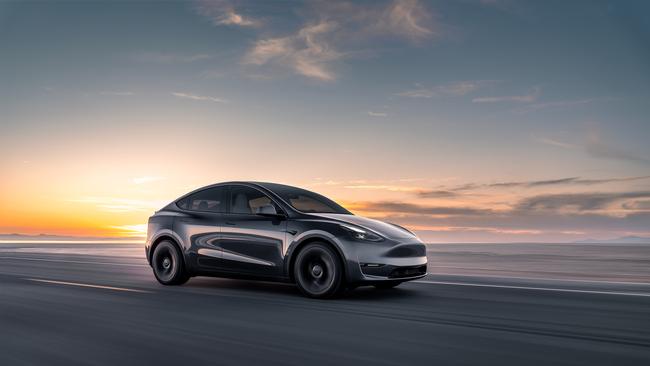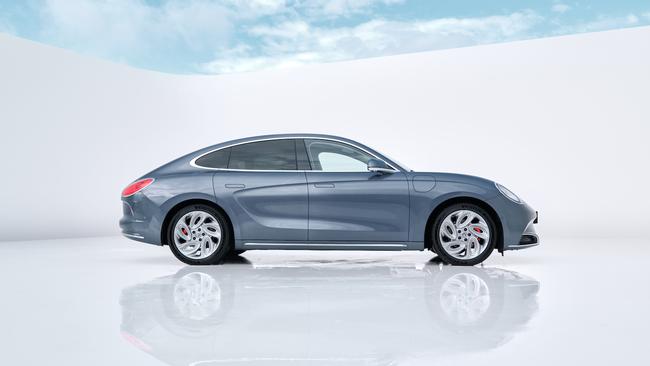The cost to produce EVs has begun to drop, making EVs cheaper than ever
The cost to buy an electric vehicle is beginning to come down, making EVs more accessible than ever, but what does this mean automotive brands?

The cost of buying into an electric-vehicle future is coming down, which is good news for lowering transport emissions, but they might not be dropping fast enough to keep automotive brands stable and profitable.
According to Wells Fargo analyst Colin Langan, who recently updated his cost analysis comparing internal-combustion vehicles (ICE) with BEVs, or battery-electric vehicles, an EV was almost $US10,000 ($15,000) more expensive to build than an ICE vehicle. Batteries were costing around $US14,000, while the motor and battery system cost roughly $US3000. A traditional combustion engine and transmission, by comparison, could be built for just $US7000, on average.
Today, however, Langan says EVs cost about $US7000 more to make than ICE vehicles.
ELECTRIC VEHICLES SPECIAL REPORT

EVs get backing in Labor’s federal budget

Cars get cheaper as key costs fall Cheaper cars as costs fall

Infrastructure a big budget winner

EVs are getting bigger and better

Luxury sits up high as sales boom

Haters gonna hate but the market won’t stop moving
The electric vehicle market continues to boom, despite the naysayers.

How EVs are changing sports cars

Audi gets room to grow with new platform

The ultimate buy guide for EVs

The eight must-know EV facts

New laws to stop ‘ICE-blocking’

Holiday hotspots due for a jolt

Tesla downloads new revenue model in over-the-air upgrades

Would this EV tempt to you buy a Saab again?

Can battery metals be sourced sustainably?

Oil use down as EVs rise

Are EVs really cleaner? It depends where you live

‘Blade’ battery to cut range anxiety

Does hard driving mean hard wearing?
The biggest change has been in the cost of battery components, which have dropped about $US3000 per vehicle. A drop in the price of lithium, a key component of the lithium-ion batteries used in EVs, has been the most significant factor. ICE engines and gearboxes still cost around the same.

Langan estimates that car company profit margins were around 7.3 per cent in 2022, or a profit per vehicle of around $US2500. If an EV is costing $US7000 more than an ICE vehicle, it’s easy to see why they could be a threat to the bottom line.
Car makers believe battery costs will fall even further – by as much as 40 to 50 per cent by the middle of this decade, thanks to a combination of improved production technology, ramping up scale and a move to making their own batteries rather than buying them from suppliers.
Another way to cut costs will be shifting to new kinds of battery technology. The current construction techniques, using nickel and cobalt, are expensive, but many car makers, including Tesla, are moving towards iron-based battery chemistry, which can lower the cost of a battery by as much as 15 per cent.

Some companies, including Tesla – which posted an operating profit margin of 11 per cent in the first quarter of this year, even as it cut prices for its cars in the US – are proving that EVs can be sold profitably.
And a relative newcomer to the Australian market, BYD, the largest maker of EVs in China, is profitable despite selling cheaper EVs.
Locally, industry experts say prices are finally falling in Australia, as more EVs become available, including the mid-range Cupra Born ($60,000) and cheaper Chinese models like the $44,490 GWM Ora, the BYD Dolphin – which is expected to cost less than $40,000 – and the MG4.
Riz Akhtar, a spokesman for Carloop, a company that analyses EV trends, says the local market has undergone big changes this year as more electric cars become available and wait times get shorter.

Carloop data shows local buyers are now waiting between eight and 12 weeks to take ownership of a Tesla, down from as long as seven months in January 2022.
“For the first time, we’ve seen some of the lower-priced Teslas dip below $50,000,” Akhtar says. “People still (incorrectly) believe Teslas cost more than $100,000 new, and that there’s barely any other brand offering electric vehicles that are affordable.
“As interest grows and people see they are more attainable, that will change.
“When MG launches the MG4, which is supposed to be around $40,000, we’ll be getting close to a $37,000 price (after government rebates) for an electric vehicle.”
The relatively high entry cost of EVs was an issue acknowledged by federal Energy Minister Chris Bowen, who pointed out that while they are cheaper to run, they are more expensive at the outset, a situation not helped by the limited number of models available in Australia.
“In the United Kingdom, for example, you can get many, many more models of cheaper EVs and they’re coming down all the time,” Bowen told ABC radio.


